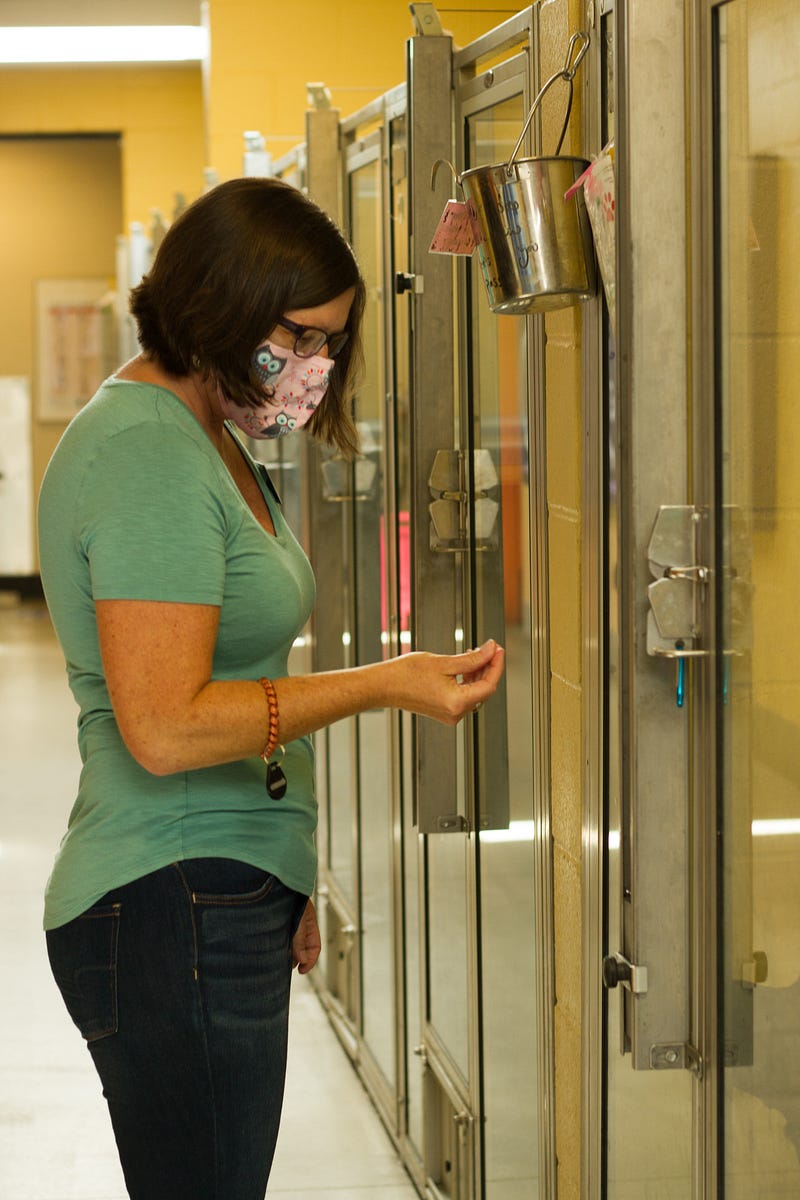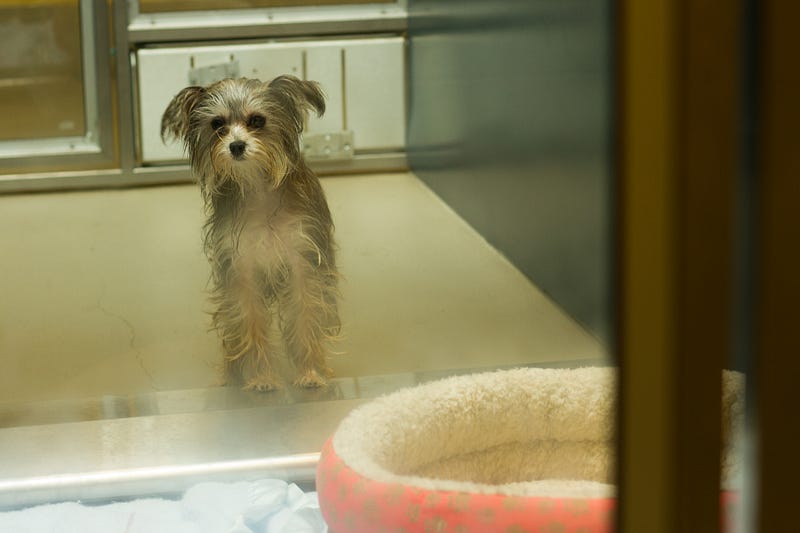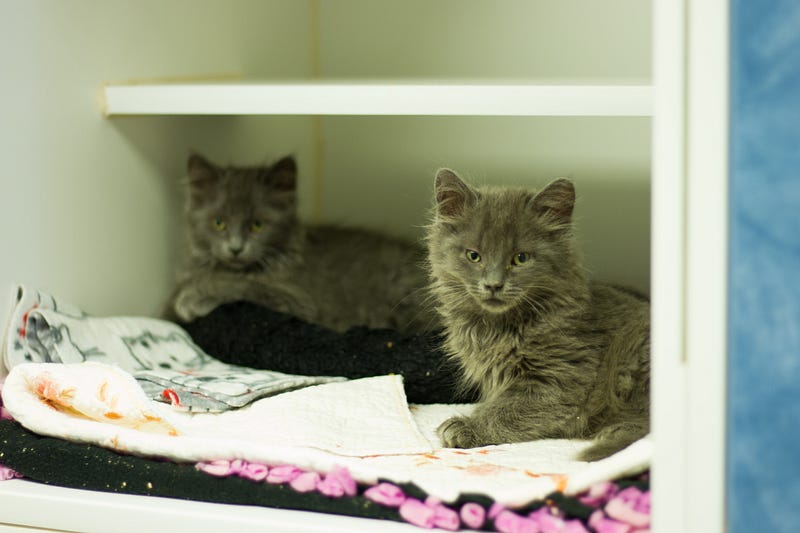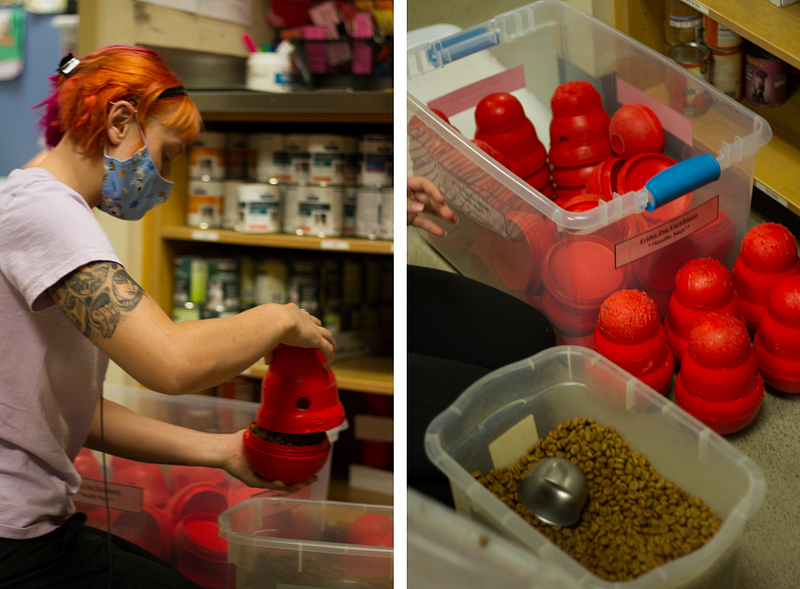The Dog Days Aren’t Over
Stories from Whatcom Humane Society volunteers and staff
Story by Mia Amis

Huddled in the back of her kennel, LuLu, with her sleek, black coat and a white chest, cowered when first approached by Valerie Reyes. Reyes, who had just begun volunteering for the Whatcom Humane Society (WHS), decided to give the dog some space, knowing LuLu was probably involved in negative situations with humans before. From a distance, Reyes introduced herself to LuLu, offered some treats and left her alone.

When Reyes returned on another day, she introduced herself again. Surprisingly, LuLu came to the front of the kennel and accepted the treats Reyes had slid under her door. LuLu was shy and hesitant and stayed in the shelter longer than most. But, Reyes began interacting with Lulu regularly, when she could. With every visit, Reyes watched as LuLu gained confidence and trust until she was eventually adopted.
WHS hosts the annual Dog Days of Summer, where they implore families to bring their dogs for treats, socialization and games. Reyes was just leaving after volunteering at this event when a dog caught her off-guard and jumped on her. To her surprise, it was LuLu with her adoptive family saying hello to her old friend.
“The best experiences are [knowing] that they are adopted and loved and in their own homes now, with their adopted families,” Reyes explained.
As a kid, Reyes lived in a home without animals. Reyes developed a fear of dogs when one of her friends — who is also involved with animal rescue — was bitten while trying to corral a lost dog.

“[My husband] grew up with animals; so, he introduced me to having a dog in our home and, when we adopted our dog together, that’s what really got me started with wanting to be more involved with the shelter,” Reyes said.
Accepting all animals, WHS commits to being an open-admission animal shelter, regardless of age, breed or condition. With three facilities: domestic, farm and wildlife, WHS staff and volunteers care for an average of 4,500 animals a year.
Kelsey Forbes has worked in all three facilities and began volunteering in 2016 with the Wildlife Rehabilitation Center. After being hired in the domestic animal facility in 2019, Forbes started volunteering in the farm facility on her days off.

“Animals have always been a huge passion and I had two days off a week and I didn’t know what to do with myself,” Forbes explained. “So, I just figured I might as well put a couple hours to the farm facility.”
After recently moving to Bellingham, Forbes found a limping, three-legged deer and immediately searched online for somewhere that could help. She soon found a number and dialed. After speaking with a representative from the Wildlife Rehabilitation Center at WHS, Forbes signed up as a volunteer and never left.
“You get an opossum; its mother was hit by a car. They’re marsupials, so the babies are in the pouch,” Forbes described. “Being able to rescue the joeys from the pouch, bringing them into care, and helping them grow up to be able to live and survive in the wild again; it feels awesome.”
In the farm facility, horses take longer to adopt out than other animals. Since they are so expensive, require special care and need lots of land, it takes a specific person to adopt a horse.
“One of our resident horses had been there for over two years, and one had been there for over three, and they finally found homes,” Forbes said, beginning to tear up. “The people who were adopting had horses who lost their best friend, probably naturally, and horses do better, usually, with another horse, and they looked at our facility and snatched them up and it was really awesome.”
At WHS, working with fearful animals, similar to LuLu, is not uncommon.
“This is where I want to be in life,” Forbes remembered thinking. “I love being the animal lady.”
“You’re on their time. You can’t just force them. You can’t reason with them. It’s not like talking to a fearful human being and trying to get them to understand you. They don’t speak the language,” Forbes expressed. “So, I’ve learned to be a lot more patient and tolerant and learn the different kinds of techniques to diffuse certain situations and that’s actually crossed over with how I work with people too.”
As a WHS education and outreach coordinator, Forbes seeks to educate students of all ages, from preschoolers to Western Washington University students.
“This little girl had caught me when I was at the supermarket, she recognized me,” Forbes recalled.
“That’s the animal lady!” the little girl exclaimed.
“This is where I want to be in life,” Forbes remembered thinking. “I love being the animal lady.”
Established in 1902, WHS is the oldest non-profit animal welfare organization in Whatcom County.
Susan Martucci, one of the newer volunteers to WHS, previously fostered animals for the Seattle Humane Society. Martucci and her daughter, a veterinarian, made the collective decision to become a certified foster family. They fostered everything from bunnies and chinchillas to dogs and puppies.

Martucci started as a dog TLC (tender love and care) where she would walk and play with the dogs at WHS. However, she soon began training in counseling adoptions.
“It’s really a more intimate setting, where the family would love for this pet to work out, but now they’ve only seen it, behind the cage. So, we get to do some introductions and kind of talk them through what we know about the animal,” Martucci explained. “It’s a lot of talking people through things they might not have thought about … making sure the animal is a good fit.”

Every year since 2010, WHS has averaged approximately 4,823 animals coming into the shelter and about 2,566 animals going out. Of the domestic animals being taken in every year since 2010, an average of approximately 1,649 were cats and about 1,531 were dogs. Although there are many other types of animals taken in by WHS, according to the WHS Intake by Species chart, cats and dogs are consistently the most common, with the majority of them being strays.
Most of the animals at WHS are just waiting for the perfect family to come along and take them to their forever home, just like LuLu.
